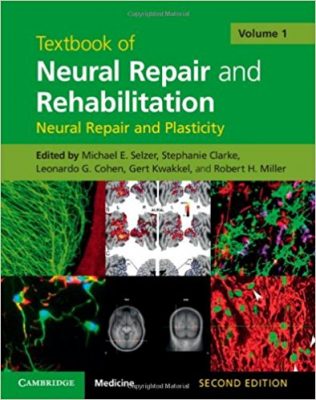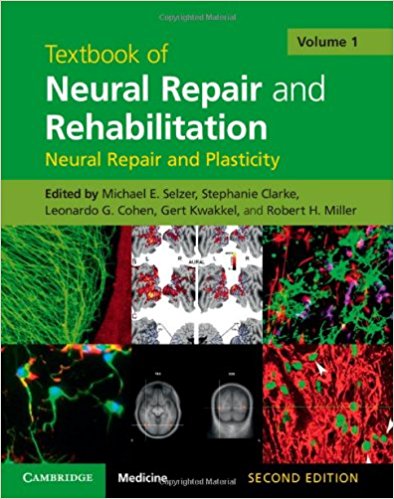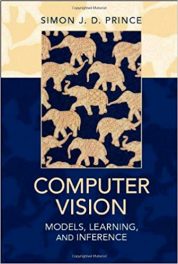 Book Review: Textbook of Neural Repair and Rehabilitation – Volume 1 – Neural Repair and Plasticity, 2nd edition
Book Review: Textbook of Neural Repair and Rehabilitation – Volume 1 – Neural Repair and Plasticity, 2nd edition
Volume 1: Neural Repair and Plasticity
Volume 2: Medical Neurorehabilitation
Editors and Authors: Michael E. Selzer, Stephanie Clarke, Leonardo G. Cohen, Gert Kwakkel, and Robert H. Miller
Publisher: Cambridge University Press – 643 pages
Book Review by: Nano Khilnani
This is a book review of Volume I, but we have listed below the titles of the Sections in Volume II as well. We urge you the readers and users, to acquire both Volume I and II so you will have a comprehensive reference source on all aspects of neural repair and rehabilitation. .
A book review of Volume II – Textbook of Neural Repair and Rehabilitation – Medical Neurorehabilitation – is found in the BOOKS section of BIZ INDIA Online News: http://www.bizindia.net/?s=Textbook+of+Neural+Repair+and+Rehabilitation+
One hundred eight-nine specialists from 15 countries around the world – Argentina, Australia, Austria, Brazil, Canada, Denmark, France, Germany, Israel, Italy, the Netherlands, Spain, Switzerland, the United Kingdom, and the United States – wrote the 92 chapters of this two-volume work. We list below the titles of the 92 Sections of this two-volume work:
- Volume I: Neural Repair and Plasticity: 42 chapters, 643 pages
- Section 1. Neural Plasticity: Cellular and Molecular Mechanisms of Neural Plasticity
- Section 2. Functional Plasticity in the Central Nervous System
- Section 3. Plasticity After Injury to the Central Nervous System
- Section 4. Neural Repair: Basic Cellular and Molecular Processes
- Section 5. Determinants of Regeneration in the Injured Nervous System
- Section 6. Promotion of regeneration in the Injured Nervous System
- Section 7. Translational Research: Application to Human Neural Injury
- Volume II: Medical Neurorehabilitation: 50 chapters, 708 pages
- Section 1. Technology of Neurorehabilitation: Outcome Measurement and Diagnostic Technology
- Section 2. Therapeutic Technology
- Section 3. Organization of Rehabilitation Services
- Section 4. Symptom-Specific Neurorehabilitation: Sensory and Motor Dysfunctions
- Section 5. Vegetative and Autonomic Dysfunctions
- Section 6. Cognitive Rehabilitation
- Section 7. Disease-Specific Neurorehabilitation Systems
This book can be used as a two-volume work, or as stand-alone single volumes. You do not need to first acquire the knowledge presented in the first volume in order to understand the contents of the second volume.
Volume I – Neural Repair and Plasticity – is important as a guide for you – the medical student, resident or established practitioner – when you are helping patients recover from neural injury. Most patients regain their functions only partially, the editors and authors point out. With seven sections on anatomical and physiological plasticity in the normal and injured system of nerves, this volume helps you understand:
- Anatomic and physiologic responses of neurons to injury, learning and memory
- Axonal regeneration (and molecules that inhibit it, neuronal death, and trophic factors
- Cell transplantation
- Determinants of neural regeneration
- Interventions required in repairing damaged neural circuitry
- Plasticity in specific areas of the nervous system consequent to intense use and disuse
- Stem cell biology
- Therapeutic approaches to recover connectivity and function after neural injury
- Translational research applied to human neural injury
Volume II – Medical Neurorehabilitation – can stand alone as a clinical handbook for physicians, therapists, neurorehabilitation nurses and other professionals. With seven sections just as in Volume I, this book covers numerous subject areas, including:
- Applications of basic scientific principles to the practice of neurorehabilitation
- Autonomic, cognitive, motor, sensory, and vegetative functions
- Bioengineering and robotic applications to orthotics and prosthetics
- Cell transplantation
- Design and requirements for valid clinical trials in regenerative therapies
- Diagnostic and therapeutic technology of neurorehabilitation
- Disabling neurologic disorders such as multiple sclerosis, spinal cord injury, stroke
- Disorders of consciousness
- Expanded coverage of brain stimulation and gene therapies compared to first edition
- Functional imaging
- Gait and balance assessment, and motor control
- Rehabilitation during acute phases of injury
This second edition of Volume I on neural repair and plasticity published in 2014 contains many updates over the first edition published eight years earlier in 2006. Neurorehabilitation is a growing medical specialty, thanks to advances that are occurring very rapidly.
The editors point out: “The basic science relevant to functional recovery from neural injury is perhaps the most exciting and compelling of all medical sciences. It encompasses the areas of plasticity, regeneration and transplantation in the nervous system that individually have been the subjects of many monographs.” Technological advances in particular have been helping in neurorehabilitation relating to recovering motor skills.
As an example of how patients regain their motor skills, I urge you to go to Section 3 – Plasticity after injury to the central nervous system – and in particular read chapter 13 – Spinal plasticity underlying the recovery of locomotion after injury. You will note in this chapter how patients recover their movement capabilities. Here are the main sections of this chapter:
- Introduction
- Locomotor recovery after spinal cord lesions in cats
- Locomotor recovery after spinal cord lesions in rats
- Locomotor recovery after spinal cord lesions in mice
- Changes in the spinal cord after spinal lesions in relation to recovery of locomotion.
- Stimulating the injured spinal cord
- Pharmacological stimulation and changes in receptor sensitivity
- Electrical Stimulation
- Concluding Remarks
- References
This book is a comprehensive, important and highly valuable resource for health professionals involved in the study and implementation of programs that assist patients recover their functions following injury to their nervous system. It provides overviews and details of all aspects of anatomical and physiological plasticity in the normal central nervous system, in the mechanisms of neuronal death, in axonal regeneration, in stem cell biology, and in research strategies targeted at axon regeneration and neuron replacement.
Editors and Authors:
Michael E. Selzer is Director of the Shriners Hospital Pediatric Research Center, and Professor of Neurology at Temple University School of Medicine in Philadelphia, Pennsylvania.
Stephanie Clarke is Professor and Head of Neuropsychology and Neurorehabilitation at Service de Neuropsychologie et Neurorehabilitation CHUV in Lausanne, Switzerland.
Leonardo G. Cohen is Chief of the Human Cortical Physiology Section and the Stroke Rehabilitation Clinic at the National Institute of Neurologic Disorders and Stroke at the National Institutes of Health in Bethesda, Maryland.
Gert Kwakkel is Professor in Neurorehabilitation in the Department of Neurorehabilitation Medicine at VU University Medical Center in Amsterdam, the Netherlands.
Robert H. Miller is Professor in the Department of Neurosciences at Case Western University School of Medicine in Cleveland, Ohio.






